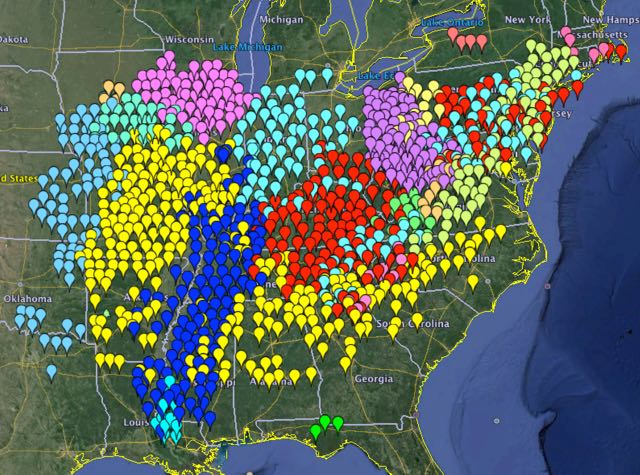Periodical Cicada Brood Maps – It’s the second-largest periodical brood of cicadas, according to the University of Connecticut. You can see Brood XIV’s territory shaded in lime green on the map below. It stretches from . Generally, brood survival depends on habitat survival. Forests, parks, estates, and areas undisturbed by construction (or soil and/or tree removal) usually retain their periodical cicada populations. .
Periodical Cicada Brood Maps
Source : en.wikipedia.org
periodical cicada brood map Entomology Today
Source : entomologytoday.org
Cicadas | Buckeye Environmental Horticulture Team
Source : beht.osu.edu
periodical cicada brood map Entomology Today
Source : entomologytoday.org
Billions of cicadas will emerge in rare 2024 double brood event
Source : www.nbcnews.com
File:Periodical Cicada Broods of the United States.png Wikipedia
Source : en.wikipedia.org
Composite map of all extant periodical cicada broods, adapted from
Source : www.researchgate.net
Brood X Periodical Cicadas FAQ (U.S. National Park Service)
Source : www.nps.gov
Visualizing all periodical cicada broods | Cicada Mania
Source : www.cicadamania.com
Two broods of periodical cicadas will emerge outside of Michigan
Source : www.canr.msu.edu
Periodical Cicada Brood Maps File:Periodical Cicada Broods of the United States.png Wikipedia: In what states will cicadas be emerging in 2021? Brood X is one of the largest and most broadly distributed groups of periodical cicadas. They can be found from northern Georgia to New York . If you live in North Georgia, you may have begun to see little black cicadas emerging from the ground in great numbers in recent weeks – these are called periodical cicadas, and they are a part of .









